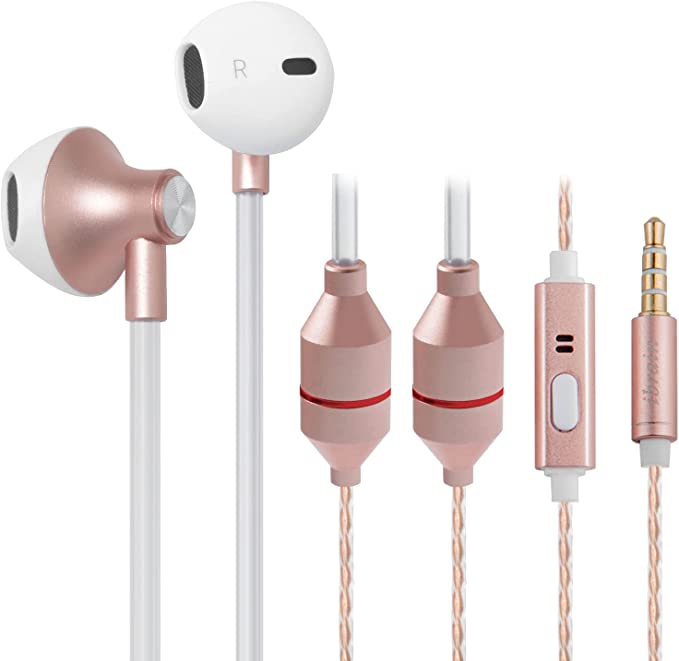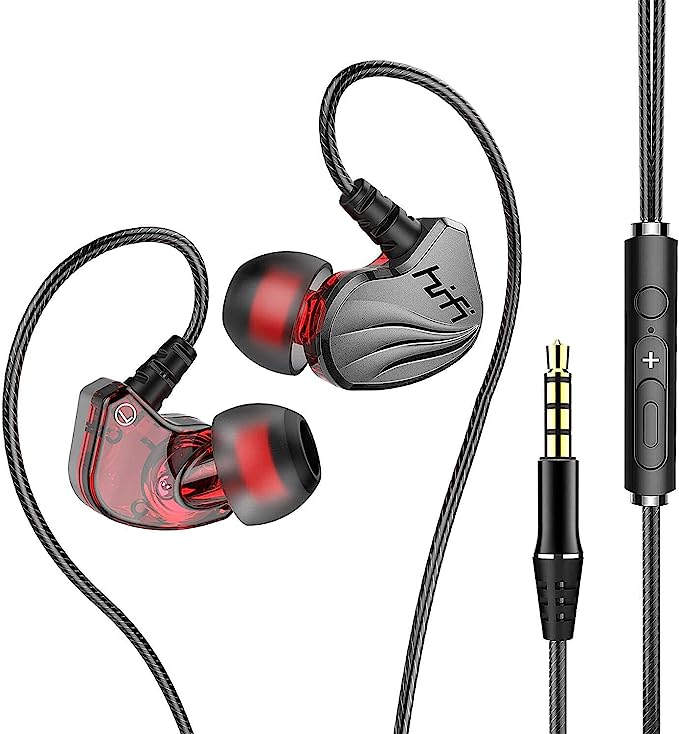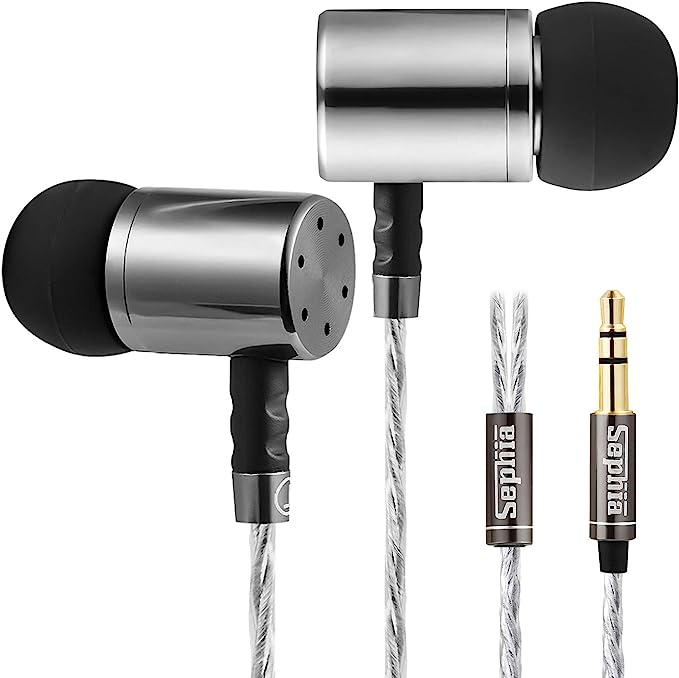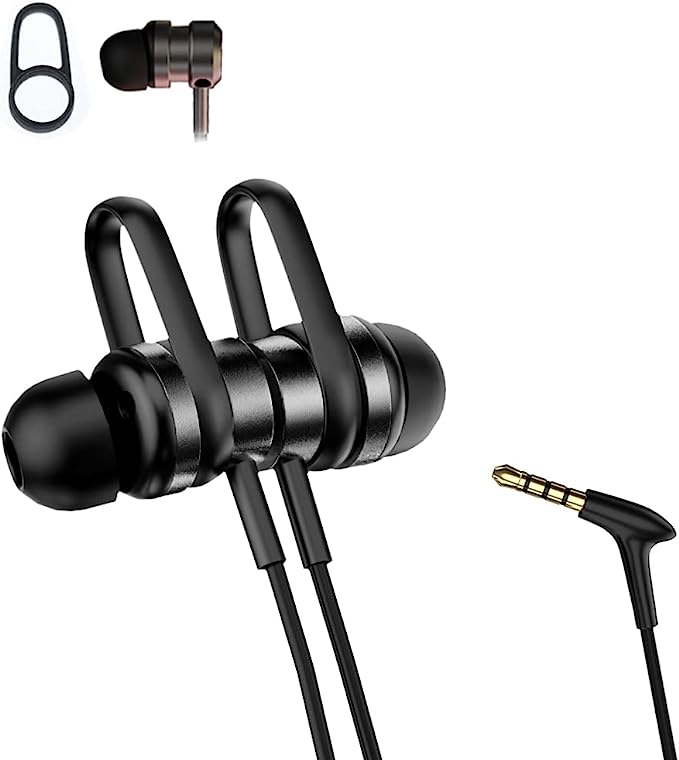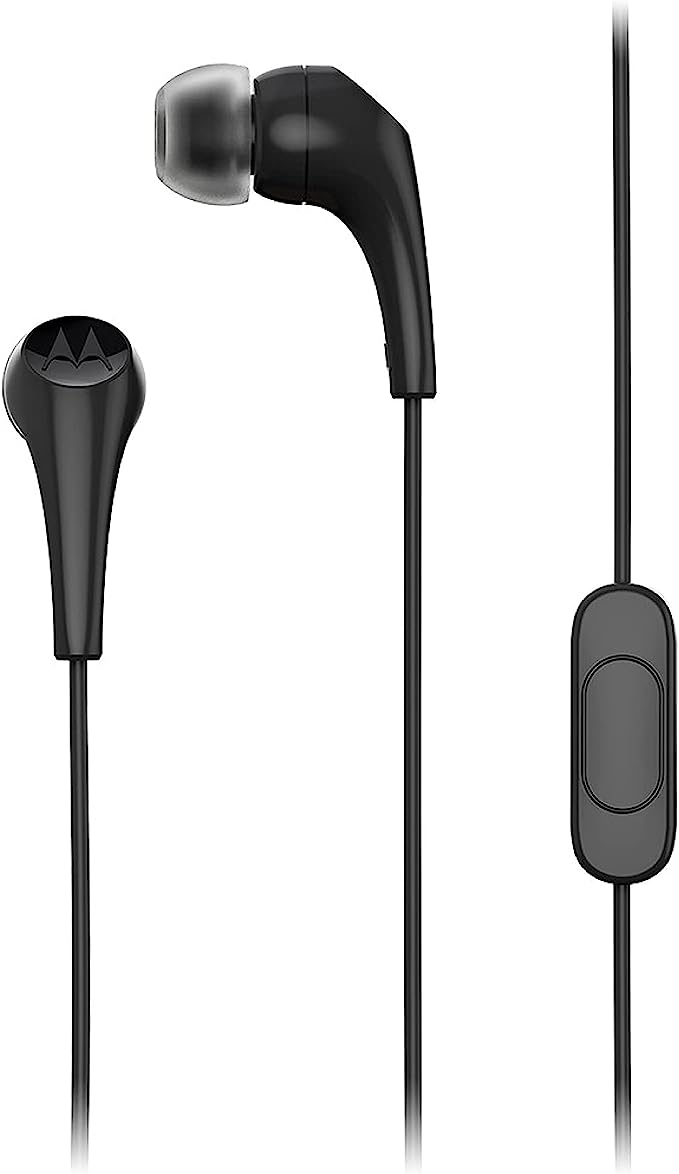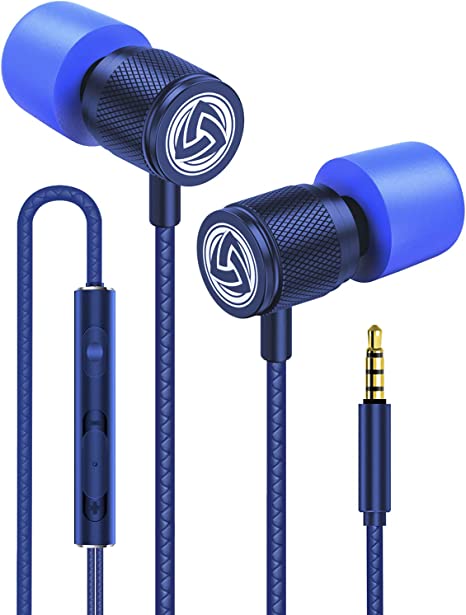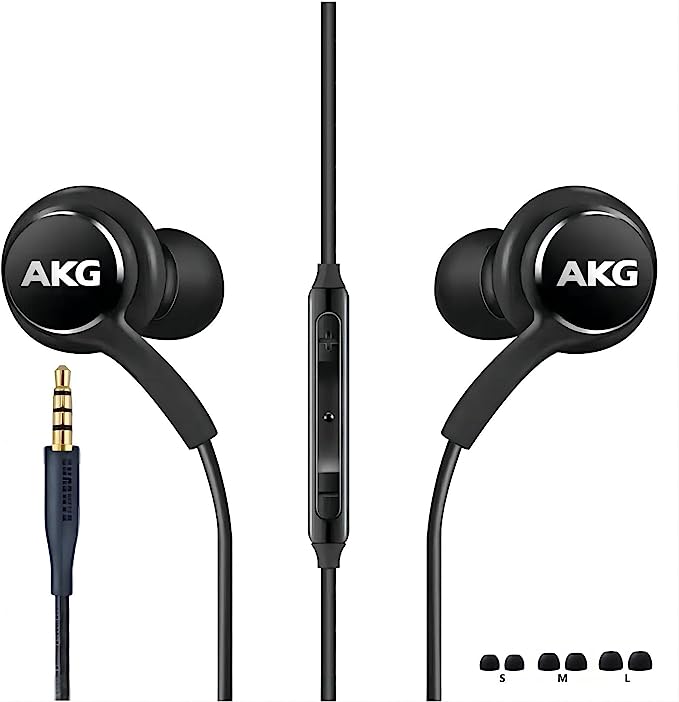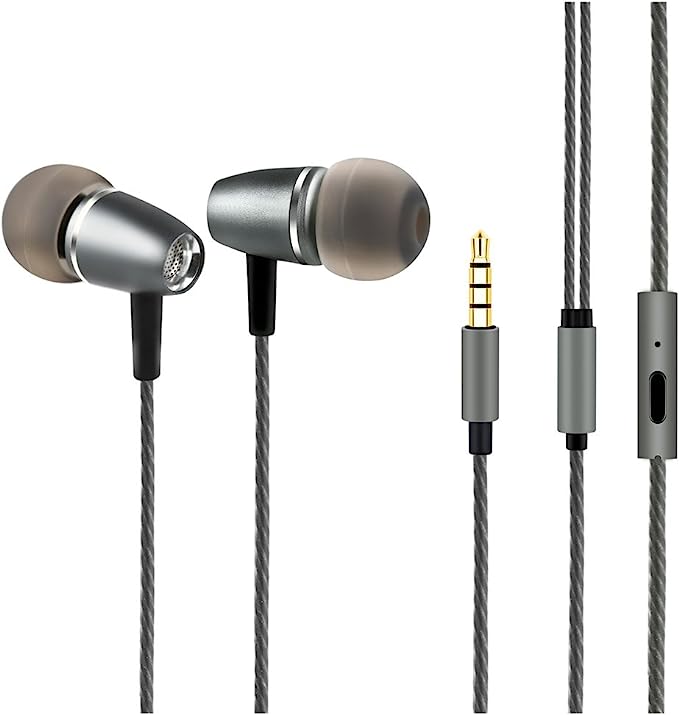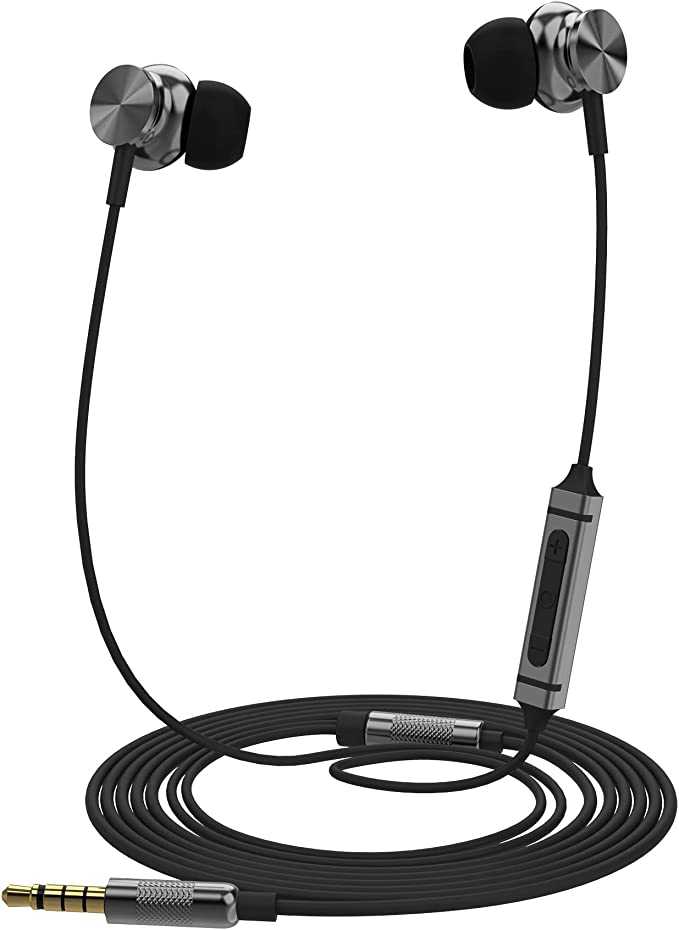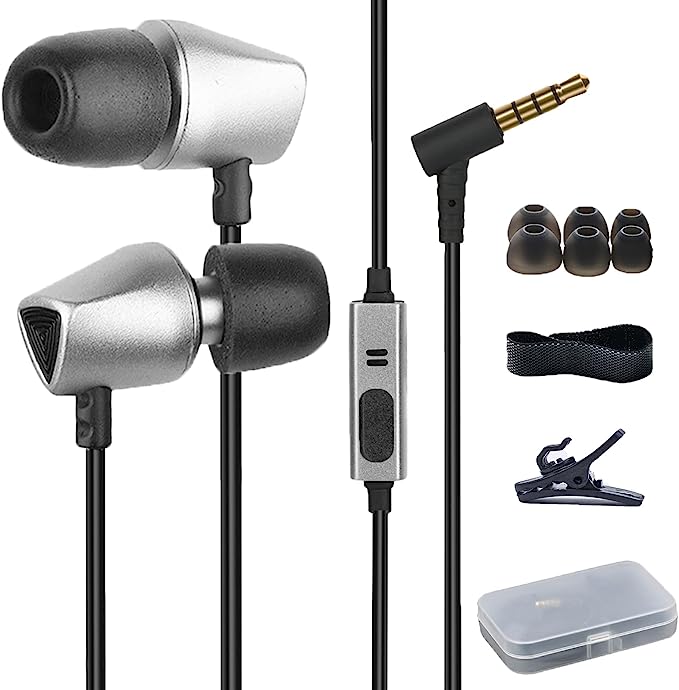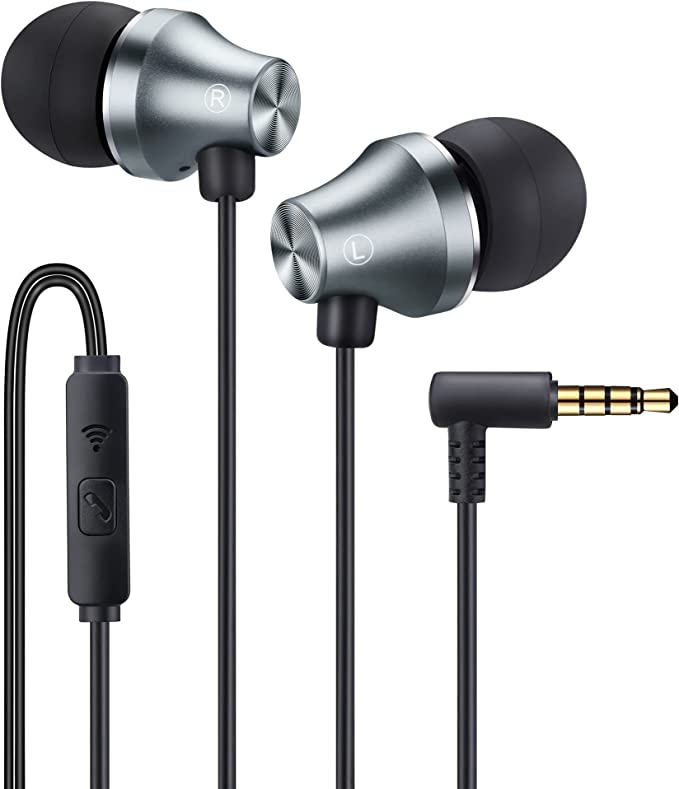ibrain Air Tube Headphones: Exploring Air-Conducting Earbuds for a Different Listening Experience
Update on May 15, 2025, 6:14 a.m.
Our lives are increasingly scored by the soundtrack playing through our headphones. From the daily commute accompanied by a favorite podcast to a focused work session fueled by ambient music, or a crucial call taken on the go, these personal audio devices have become almost indispensable extensions of our ears. But amidst this constant connectivity, how often do we pause to consider the intricate technology nestled so close to us, or the diverse design philosophies that shape our listening experiences? It turns out, not all headphones are forged from the same mold, especially when engineers begin to rethink the very way sound reaches our ears.

The Beating Heart of Sound: A Quick Peek Inside Traditional Earbuds
Before we delve into newer concepts, let’s briefly revisit what most of us are familiar with: conventional earbuds. At their core, these devices house tiny speakers, technically known as drivers, which are positioned directly within or very near the ear canal. These drivers, marvels of miniaturization, vibrate to create the sound waves that our eardrums pick up and our brains interpret as music, speech, or the myriad sounds of our digital world. The wiring that carries the audio signal and powers these drivers also, by necessity, terminates right at these in-ear components. This proximity of electronic elements to the head is a fundamental characteristic of most common earbud designs.
A Breath of Fresh Air? Understanding Air Tube Technology
Now, imagine a different approach. What if those tiny speakers weren’t directly in your ears? This is the central premise behind air tube headphone technology. The core idea is to relocate the electrical speaker components away from the head, placing them at some distance down the cable. So, how does the sound get to your ears? Through slender, hollow, air-filled tubes. The sound generated by the distanced speakers is channeled into these tubes and travels as pressure waves through the air within them, ultimately arriving at the earpieces that sit in your ears.
The “why” behind this design choice, at least according to manufacturers like ibrain, revolves around offering a different listening paradigm. ibrain, for instance, states their technology aims to create a “safe listening style” by moving the speakers away and suggests this can reduce “potential hazards to your head,” including minimizing “harm from EMF emissions.” Think of the air tube, in a very simplified analogy, as a miniaturized, refined version of how a stethoscope transmits sound – the tube itself is a passive conduit for the sound waves already generated elsewhere.

Meet the ibrain Air Tube Headphones: A Case Study
ibrain positions itself as a company with a long-standing commitment to this niche, claiming “22 years” of specialization in air tube headsets and holding patents in “48 countries and regions” for its technology. This suggests a focused, long-term investment in developing and refining this particular audio delivery system. Let’s examine the specifics of their “Air Tube Headphones, Air Tube Headset with Microphone Airtube Earbuds with 3.5mm Jack for Computer, Laptop, Cell Phone - Pink,” based on the available product information.
Visually, the pink model is described as having a “heart-shaped appearance” on the earbuds and is promoted as “lightweight.” Typically, such a headset would come with the main unit and often includes extra soft silicone ear tips to allow for a customized and comfortable fit. A notable term in ibrain’s description is “sonic concentrator,” where the speakers are said to be encased. While not a standard acoustic engineering term, it likely refers to the specially designed housing for the miniature speakers, engineered to efficiently direct the sound energy into the entrance of the air tubes.
The materials involved are crucial. The eartips are silicone, chosen for comfort and its ability to create a decent seal in the ear canal. The air tubes themselves, though their specific material isn’t detailed in the source, would need to be flexible, durable, and possess suitable acoustic properties to transmit sound with reasonable fidelity. The main cable leading from the audio jack to the point where the speakers and air tubes begin is described as a “metal shielded wire.”
For connectivity, these ibrain headphones rely on the venerable 3.5mm audio jack, a once-ubiquitous connector still found on many computers, laptops, tablets, and older smartphones. This makes them broadly compatible with a wide range of existing devices. They also feature an in-line microphone, controllable with a “simple one-button design” for answering or ending calls, adding a layer of practicality for communication. However, one feature notably absent is any form of onboard volume control; adjustments would need to be made on the source device itself.

The Science Behind the Air: How Does It Really Work?
Understanding the ibrain Air Tube headphones requires a brief foray into a couple of scientific principles: the acoustics of sound traveling through tubes and the physics of electromagnetic fields (EMF).
Sound Through a Straw (Almost!): The Acoustics of Air Tubes
When sound is generated by the speakers and directed into the narrow air tubes, air itself becomes the medium for transmission. Sound waves are essentially pressure variations, and these variations propagate through the air column contained within the tube. The characteristics of this tube – its length, diameter, material, and any bends – can influence the sound that ultimately reaches the ear. In acoustic design, engineers know that tubes can introduce their own resonances (frequencies at which they vibrate more readily) or cause attenuation (weakening) of certain frequencies, especially very high or very low ones. A longer, narrower tube might preserve lower frequencies better but could dampen higher ones, or vice-versa depending on its specific acoustic impedance. The challenge for designers of air tube headphones is to balance these factors to deliver a sound that is as clear and faithful to the original audio signal as possible. The “sonic concentrator” likely plays a role here, attempting to optimize the coupling of sound from the speaker diaphragm into the air tube.
The EMF Consideration: Distance is Key
A significant part of ibrain’s “safer listening” claim centers on the idea of reducing exposure to electromagnetic fields (EMF). All electronic devices that consume or manipulate electricity generate EMF to some degree. In conventional headphones, the drivers (speakers) are small electromagnets that convert electrical signals into mechanical vibrations (sound), and they do this right next to the user’s head.
The core physical principle that ibrain’s design leverages here is the Inverse Square Law. In simple terms, as you move away from a source of radiation (like EMF), the intensity of that radiation decreases dramatically – specifically, it decreases with the square of the distance. Imagine a campfire: you feel its heat intensely when you’re very close, but step back a few feet, and the warmth drops off significantly. By moving the current-carrying, sound-producing speaker drivers away from the ears and down the cable, the intensity of any EMF they generate at the location of the head is, by this physical principle, substantially reduced.
The metal-shielded wire mentioned for the main cable plays a role before the sound generation stage. Shielding is a common technique in audio cables to protect the delicate electrical audio signals from external electromagnetic interference (like hum from nearby power lines or other devices). This helps maintain a cleaner signal to the speakers, but the primary “EMF reduction at the head” aspect of the air tube design comes from physically distancing the speakers themselves.
ibrain suggests this design is “ideal for pregnant women, children and old people.” This aligns with a broader trend of heightened awareness and precautionary approaches to various environmental exposures for groups often considered more vulnerable or for individuals who simply prefer to minimize such exposures.

The Listening Experience: Sound, Comfort, and Practicalities
While the science offers a rationale for the design, the everyday user experience hinges on more tangible factors: audio quality, comfort, and ease of use.
Audio Quality – The Big Question:
The most significant question for any headphone is: how do they sound? Transmitting sound through air tubes, as discussed, can introduce acoustic complexities. While the aim is clear sound delivery, the journey through the tubes might alter the frequency balance or transient response compared to a high-quality driver placed directly at the ear. The source material for the ibrain headphones doesn’t include detailed audiophile reviews, so a definitive judgment on their sound signature (e.g., bass response, treble clarity, soundstage) isn’t possible from this data alone. It’s an area where the design must carefully balance the goal of speaker distancing with the challenges of acoustic transmission through a confined air column.
Comfort and Fit:
The “lightweight” design and the provision of “extra a pair of soft silicone ear buds” are clear positives for comfort. A good fit is essential not only for comfort during extended wear but also for creating a proper seal, which can significantly impact perceived bass response and isolation from external noise.
Real-World Use:
For devices with a 3.5mm jack – computers, laptops, older smartphones (like the iPhone SE/6/6s/Plus/5/5c/5s, Samsung S10/S9/S8, Androids, and tablets mentioned by ibrain) – these headphones should offer straightforward plug-and-play functionality.
The landscape changes with many modern smartphones that have omitted the 3.5mm jack. For these, an adapter (dongle) is necessary. This is where some user-reported friction appears. One review for the ibrain product mentioned, “you’ll need to buy an adapter for your phone,” which is a practical advisory. More critically, another user stated, “This product is fantastic with everything I use except my iPhone…even with the dongle, I can’t get it to work with my iPhone.” This highlights a potential compatibility issue, which could stem from the adapter, the iPhone’s handling of certain analog audio accessories via its digital port, or the headphones themselves. Without more data, it’s hard to pinpoint the cause, but it’s a valid concern for users of newer iPhones. ibrain does prudently advise, “Please check the jack type before your purchase.”
The single-button microphone offers basic call handling – answering or ending calls – which is convenient. The lack of onboard volume controls means reaching for your device to make adjustments, a minor inconvenience but a common characteristic of simpler wired headsets.
Who might appreciate these most? Beyond the groups ibrain suggests, individuals who spend many hours a day on calls or listening to audio and are consciously looking for ways to minimize the proximity of electronic components to their head could find this design philosophy appealing.

Beyond the Earbuds: The Broader Conversation
The emergence and persistence of technologies like air tube headphones tap into a wider societal trend: a growing interest in “healthier” or more “mindful” interactions with technology. As we become more aware of our digital environment, some consumers actively seek out products that align with a precautionary principle or offer alternatives to conventional designs.
It’s important to balance this with a realistic perspective. No single technology is a panacea, and “safer” is often a relative term. While distancing speaker drivers can reduce EMF exposure at the head based on physical principles, overall healthy listening habits – such as managing volume levels and duration of use – remain paramount for auditory health irrespective of headphone design.
The ibrain Air Tube headphones represent one specific implementation of this air conduction idea. The engineering challenge lies in achieving good acoustic performance while adhering to the core principle of driver separation. The “22 years” of claimed specialization and patents in “48 countries” suggest a dedicated effort in this specific domain.
Final Thoughts: Tuning In to a Different Frequency
The ibrain Air Tube Headphones offer a tangible alternative for those intrigued by a different approach to personal audio, particularly if the proximity of electronic drivers to the head is a point of consideration. The underlying principle of using air as a sound conduit to distance the speakers is a clear differentiator from mainstream earbud designs, and the physics of EMF reduction through increased distance is well-established.
Like any technology, it likely comes with its own set of trade-offs, potentially in areas like absolute sound fidelity versus the benefits of its unique architecture. For the discerning consumer, these headphones present an interesting option to explore, especially if their usage aligns with the scenarios where such a design might offer peace of mind or address specific concerns.
As personal audio technology continues its rapid evolution, the dialogue between innovation, user well-being, and scientific understanding will undoubtedly bring forth even more diverse and thoughtful ways to experience our increasingly digital soundscape. It’s worth noting that the product listing referenced indicated these headphones were “Currently unavailable,” so availability would be a key factor for interested consumers.
